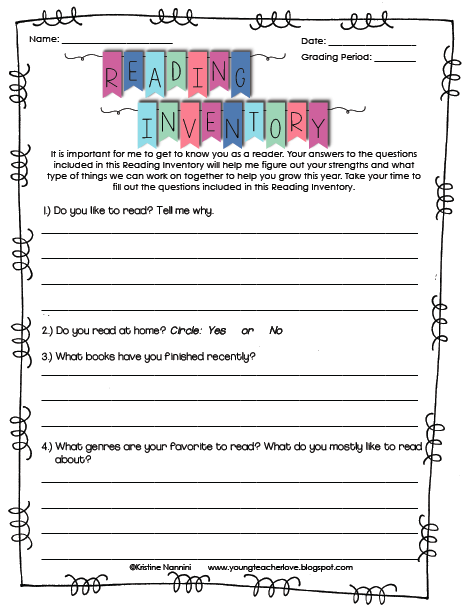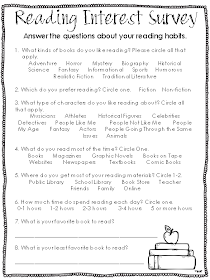Right now, we're working hard to get our classes immersed in Daily 5 and CAFE. The lessons have begun, and this is the point where teachers really start pushing to get in those individual reading conferences. One of the issues that I notice many teachers struggle with on these conferences is setting goals.
I keep my form simple (you can click on the cover to the left to download for your own use), but writing useful goals takes a lot of time and practice. I pulled out my forms from the beginning of last year to look at and give some examples. You can see how some are a little weak and leave a lot wide open without a clear path. The more specific you are with the goals, the better your student will understand how to improve.
I'm going to give a few examples from my own forms and talk about what works and what might not. I hope these help!
These are some goals that aren't terrible, but they really don't do much for the student. Yes, as a seasoned teacher, I know what I mean when I write "author's message" or "practice with passages", but these goals are supposed to be something that the student can work on independently as well. I would have been better to put these on a sticky note (or maybe in the observation section) and then come up with a plan for them to work on at their seat that was more specific.
This one starts off weak (and then I think I just kept his goal for the middle and didn't bother to write anything), but notice how the goals get more specific. On the last one, I didn't even list the specific skill. I gave him a task to focus on while reading to self.
I felt proud looking back at this sheet because we had a definite plan all the way through with this child. We started out with just finding books to stay interested, then did a little accuracy before switching to comprehension goals. You can still use short-hand AS LONG AS your students understand what they are supposed to do. (FYI: SWBST stands for "Somebody Wanted But So Then", which is great for summarizing!)
Finally, sometimes you may have to assign "homework" to help. I had one student who just couldn't get the hang of text features. We did an activity in class (this actually was a small group lesson, not individual conferences), and I noticed he was WAY off. I jotted this little note with the date and then let him know that I wanted him to practice them at home for the next time. Also note that you can set goals during small group lessons if the opportunity arises!
It takes a lot of practice, and I still have a long way to go personally. I struggle with consistency, especially since my groups of kids change throughout the year and my time with them is very limited. Some other tips to consider:
- Make a chart with specific strategies/goals for each skill. I'm going to start collecting a list for myself to keep in the front of my binder. Then I can refer to it when I'm stuck. You could even do this as a team!
- If you're not sure where to start, it's okay to give everyone the same goal for a while. Don't stress yourself out! Good instruction is good instruction. As you become more comfortable with these conferences and learn more about your students, it will be easier to branch out and give different goals.
- The more notes you take, the better you will know your students. Any little note can help you recognize ways to help your student later. I like to make notes of the types of books they are drawn to as I work with them so I can help them find good books for them. This also helps when I'm choosing books or passages for us to use as a class!
I hope that some of these tips help with your own instruction!





































